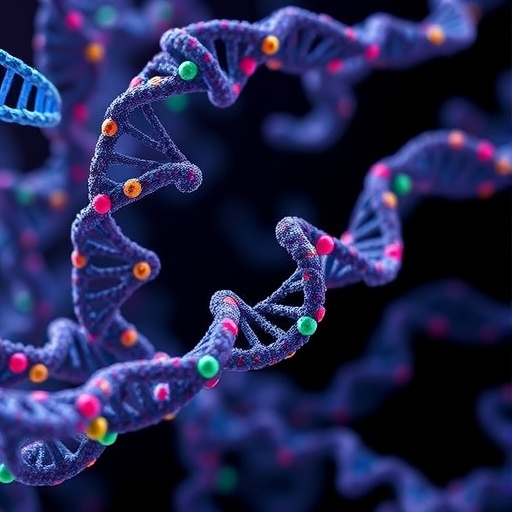Forensic genetics has witnessed monumental advancements over recent decades, yet the nuances of kinship analysis continue to challenge forensic scientists. A groundbreaking study published in early 2025 proposes a paradigm shift in the methodology of short tandem repeat (STR) genotyping, aiming to enhance the statistical power and accuracy of familial relationship determinations. This research is unfolding at the intersection of traditional forensic markers and cutting-edge sequencing technologies, promising a transformative impact on forensic casework and legal medicine.
Traditionally, STR analysis, pivotal in forensic investigations and kinship testing, relies heavily on length-based genotyping. This technique measures the length of repetitive DNA sequences—essentially counting repeat units in STR loci—to distinguish individuals and establish genetic links. Despite its widespread success, length-based STR genotyping inherently limits the information content it can provide. The resolution is confined to differences in repeat counts, which can be insufficient in complex kinship scenarios or partial DNA profiles.
The research team led by Sevay, Durmus, and Filoglu investigates the potential of sequence-based STR genotyping to overcome these limitations. Unlike length-based methods, sequence-based approaches analyze the nucleotide composition of STR regions, capturing not only repeat number variation but also sequence polymorphisms within repeat motifs and flanking regions. This richer genetic detail translates into an increased discriminative power capable of resolving ambiguities inherent in traditional methods.
Methodologically, the study meticulously compares statistical power—a measure of a test’s sensitivity to detect true kinship relationships—between length-based and sequence-based STR genotyping. Using comprehensive population datasets and robust computational models, the team simulates various kinship scenarios, including parent-child, full siblings, half-siblings, and more complex pedigrees. These simulations account for allele frequencies, mutation rates, and population substructure, ensuring the results are both scientifically rigorous and applicable to real-world forensic contexts.
The core finding is an unequivocal demonstration that sequence-based STR genotyping yields a substantial increase in statistical power across all kinship tests examined. This elevation is not marginal; in many kinship configurations, the gain approximates or surpasses a 20% increase in power. Such improvements could dramatically reduce inconclusive results, enhance the accuracy of familial relationship declarations, and provide stronger evidentiary weight in judicial proceedings.
From a technical standpoint, the researchers highlight the implementation of next-generation sequencing (NGS) platforms to obtain high-resolution STR profiles. NGS allows for massive parallel sequencing of multiple STR loci, generating detailed reads that encompass entire repeat arrays and additional sequence variants. This large data yield enables forensic labs to shift from mere allele length counting to comprehensive haplotype analysis, uncovering novel allelic variants previously undetectable by fragment analysis.
The implications extend beyond enhanced forensic accuracy. Sequence-based STR genotyping’s increased statistical power fosters improved confidence in kinship assessments involving degraded or mixed DNA samples, common in crime scenes and disaster victim identification. It also offers potential benefits in population genetics and anthropological research, where fine-scale genetic relationships shed light on human migration and evolution.
However, this transition is not void of challenges. The technical complexity of sequence-based analysis requires specialized equipment, bioinformatics expertise, and standardized reference databases to interpret novel sequence variants accurately. Additionally, the forensic community must overcome regulatory hurdles and establish validation protocols to integrate sequence-based methods into routine practice.
The study also addresses mutation dynamics inherent to STR loci. While length-based genotyping considers simple repeat expansions or contractions, sequencing reveals point mutations and repeat motif variations that contribute to STR diversity. These factors influence kinship calculations, and the research outlines a refined statistical model incorporating these detailed mutational processes, resulting in more realistic and reliable kinship likelihood ratios.
Crucially, the investigators emphasize the forensic utility of sequencing in complex kinship cases, such as grandparentage and incest investigations, where conventional STR analysis struggles due to limited genetic differences. The enriched haplotype information enables discrimination between closely related individuals with higher statistical certainty, thus preventing misidentification and ensuring justice.
Data privacy and ethical considerations accompany this technological leap. Sequence-based STR genotyping generates more comprehensive genetic data, raising concerns about potential misuse or unintended disclosure of sensitive genetic information. The study advocates for strong data protection frameworks and ethical oversight to balance technological benefits with individual rights.
The research’s holistic approach, combining empirical genotyping, computational simulations, and forensic applicability, represents a milestone in modern forensic genetics. It is likely to influence ongoing debates within the forensic science community about the adoption of next-generation sequencing technologies and redefine standard practices for kinship analysis worldwide.
Moreover, the study anticipates that as sequencing costs continue to drop and computational tools evolve, sequence-based STR genotyping will become increasingly accessible to forensic laboratories, even in resource-limited settings. This accessibility promises to democratize high-resolution forensic genetics and elevate global standards for legal medicine.
The potential ripple effects in criminal justice systems are profound. With more definitive genetic relationship results, both exonerations and convictions gain scientific robustness. Complex cases involving missing persons, human trafficking, and mass disaster victim identification could benefit from the precision this method enables, adding layers of certainty that shape judicial outcomes and social trust in forensic evidence.
In conclusion, this seminal study spearheaded by Sevay and colleagues captures a pivotal moment in forensic genetics by verifying the tangible gains in kinship analysis power achievable through sequence-based STR genotyping. By moving beyond the constraints of length-based methods, the field embraces a future where genetic evidence is more informative, reliable, and just. This research heralds the dawn of a new era where forensic science marries technological innovation with legal rigor to serve truth more effectively.
Subject of Research: Evaluation of gain in statistical power for kinship analysis using sequence-based versus length-based STR genotyping.
Article Title: Evaluation of gain in statistical power for kinship analysis using sequence-based versus length-based STR genotyping.
Article References:
Sevay, H., Durmus, N., Filoglu, G. et al. Evaluation of gain in statistical power for kinship analysis using sequence-based versus length-based STR genotyping. Int J Legal Med (2025). https://doi.org/10.1007/s00414-025-03605-z
Image Credits: AI Generated
DOI: 10.1007/s00414-025-03605-z
Keywords: Forensic genetics, kinship analysis, STR genotyping, sequence-based genotyping, length-based genotyping, statistical power, next-generation sequencing, forensic science, legal medicine
Tags: DNA sequence polymorphisms in STRsfamilial relationship determination techniquesforensic casework improvementsforensic genetics innovationsforensic science research breakthroughsgenetic link establishment methodskinship analysis methodologylength-based genotyping limitationssequence-based STR analysisshort tandem repeat genotyping advancementsstatistical power in kinship testingtransformative impact on legal medicine





